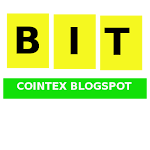Introduction
What is Hyperledger Fabric?
Key Features
- Modular Architecture: Fabric's design allows components to be swapped or upgraded without disrupting the network, ensuring flexibility and future-proofing.
- Private and Permissioned Network: Unlike public blockchain networks, Fabric operates on a private, permissioned basis, enhancing security and control for enterprise environments.
- Smart Contracts: Fabric supports smart contracts, enabling automated execution of business logic and rules.
- Channel Architecture: Separate channels for data exchange ensure confidentiality and efficient network management.
Use Cases
- Supply Chain Management: Enhance traceability, transparency and efficiency in supply chains through Fabric's blockchain solutions.
- Cross-Border Payments: Streamline payment processes, reducing latency and costs.
- Digital Identity: Securely manage identities and credentials.
- Healthcare: Safeguard medical records and enable secure data sharing.
- Food Safety: Track food origins, processing and distribution.
Benefits
- Security: Cryptographic techniques ensure data integrity and confidentiality.
- Scalability: Supports high transaction volumes.
- Flexibility: Modular architecture adapts to diverse use cases.
- Interoperability: Enables integration with existing systems.
Fabric's Blockchain Advantages
Hyperledger Fabric's blockchain advantages revolutionize enterprise solutions, offering unparalleled security, scalability, flexibility and interoperability. Its immutable ledger, consensus mechanisms, encryption and access control ensure robust security. Scalability is enhanced through high transaction volumes, modular architecture, distributed networks and horizontal scaling. Flexibility is achieved via customizable network topology, pluggable consensus, multi-language support and adaptable smart contracts. Interoperability seamlessly integrates existing systems, blockchain networks, cloud providers and IoT devices. Industry applications transform supply chain management, financial services, healthcare and manufacturing. Implementing Fabric brings enhanced trust, increased efficiency, reduced costs and improved compliance, empowering businesses to leverage blockchain technology efficiently and transform industries through secure, transparent data management.
- Security: Cryptographic techniques ensure data integrity and confidentiality.
- Scalability: Supports high transaction volumes.
- Flexibility: Modular design adapts to diverse use cases.
- Interoperability: Seamless integration with existing systems.
Key Components
- Peers: Validate, commit and store transactions.
- Ordering Service: Consensus mechanism for block creation.
- Ledger: Immutable, sequential record of transactions.
- Chaincode: Smart contracts execute business logic.
- Channels: Isolated, confidential data exchange.
Fabric Network Architecture
- Network Topology: Peers, orderers and clients interact.
- Node Types: Endorsing peers, committing peers and orderers.
- Communication: Secure, authenticated data exchange.
Use Cases
- Supply Chain Management: Traceability, transparency and efficiency.
- Cross-Border Payments: Streamlined, low-latency transactions.
- Digital Identity: Secure identity and credential management.
- Healthcare: Secure medical records and data sharing.
- Food Safety: Tracing origins, processing and distribution.
Industry Applications
- Finance: Secure transactions, compliance and auditing.
- Manufacturing: Transparent supply chains, quality control.
- Government: Secure data management, transparency.
- Insurance: Automated claims processing, fraud prevention.
Implementing Hyperledger Fabric
- Setup: Install Fabric binaries, Docker images.
- Network Configuration: Define network topology, nodes.
- Chaincode Development: Write, test and deploy smart contracts.
- Application Integration: Connect client applications.
Challenges and Future Directions
- Scalability: Improving performance for large-scale networks.
- Interoperability: Enhancing integration with other blockchain frameworks.
- Security: Continuously strengthening network resilience.
Conclusion
Resources
- Linux Foundation - Hyperledger Fabric
- Hyperledger Fabric Documentation
- Hyperledger Fabric Tutorials


.jpeg)
